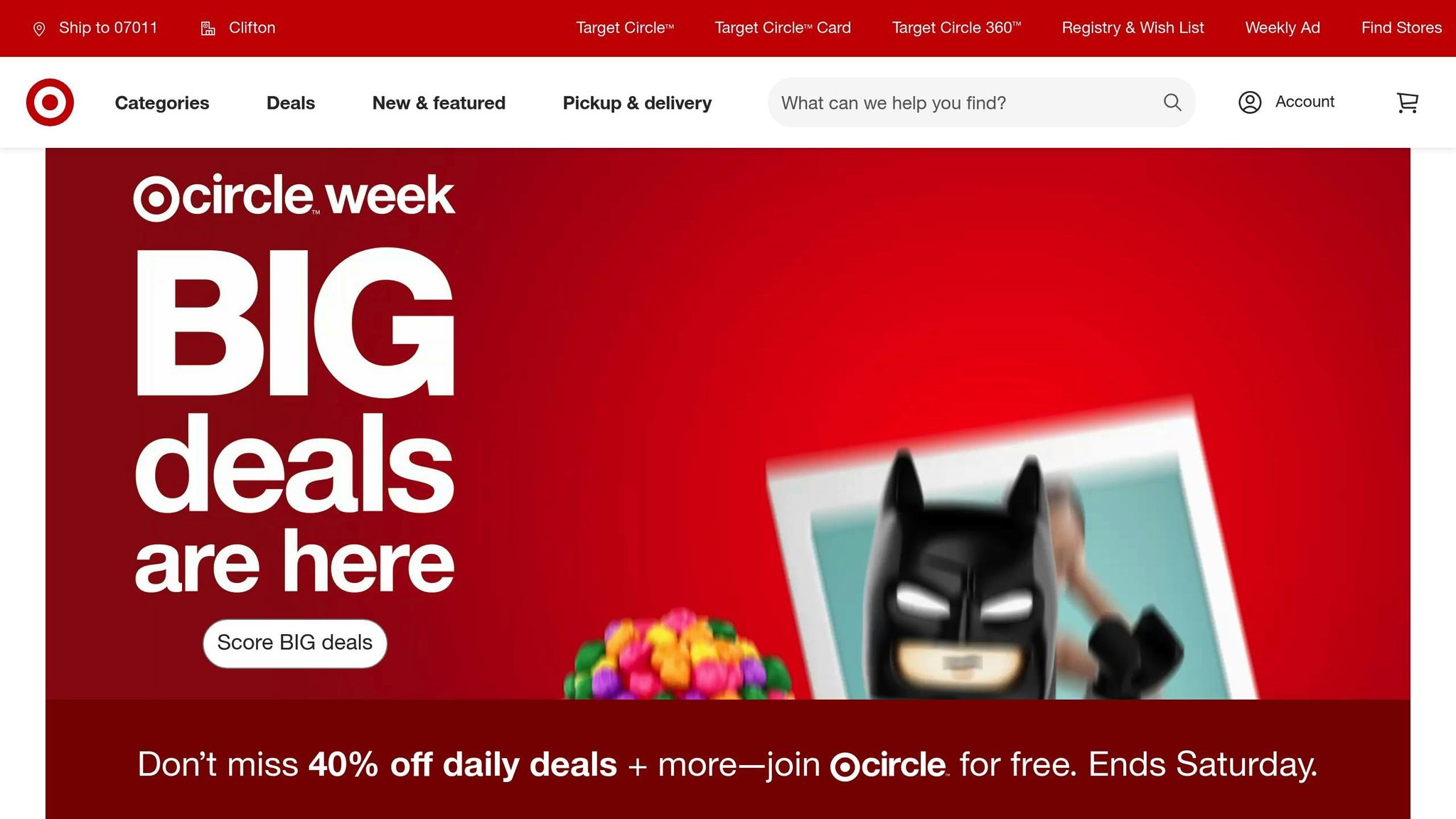Keyword intent refers to the purpose behind a search query. Understanding it is essential for creating content that meets user needs and improves SEO performance. There are four main types, each tied to a specific stage in the customer journey:
- Informational: Users seek knowledge or answers. Example: "how to fix a leaky faucet."
- Navigational: Users want a specific website or brand. Example: "Netflix login."
- Commercial: Users research options before deciding. Example: "best laptops under $1,000."
- Transactional: Users are ready to take action. Example: "buy running shoes online."
Matching your content to these intents can boost engagement, conversions, and search rankings. Each intent type requires tailored content, from educational blogs to direct call-to-action pages. By addressing all stages of intent, you can guide users from awareness to action effectively.
Informational Intent
What Is Informational Intent?
Informational intent refers to searches where people are looking to understand something better. These queries often start with phrases like "how to", "what is", or "why does." At this stage, users aren’t ready to buy – they’re gathering information.
Think of it as someone asking an expert for guidance. They could be a beginner exploring a new topic or someone experienced who needs specific details to solve a problem.
When Google identifies these types of searches, it typically serves up blog posts, articles, videos, or other educational content – not product pages or sales-focused material. This makes informational intent a key opportunity to build your brand’s visibility and showcase your expertise.
Informational Keyword Examples
Informational keywords can cover just about any topic or industry. Here are some common types:
- How-to searches: These are some of the most popular informational queries. Examples include "how to change a tire", "how to write a resume", or "how to start a podcast." These searches show users are looking for step-by-step advice.
- Definition searches: These help users grasp a concept. For instance, "what is cryptocurrency", "what is SEO", or "what is a 401k." These queries often come from people learning about a topic for the first time.
- Comparison searches: These help users weigh their options. Examples include "iPhone vs Android", "WordPress vs Squarespace", or "organic vs paid advertising." These searches focus on understanding the differences rather than making an immediate purchase.
- Problem-solving searches: These aim to address specific issues. Think "why is my car making noise", "how to fix a leaky faucet", or "why won’t my computer start." These users are dealing with immediate challenges and need clear solutions.
How to Target Informational Keywords

To connect with users searching for informational queries, focus on creating content that educates and delivers value. This isn’t the time to sell – it’s about being helpful.
- Write blog posts that dive deep into the topic. Cover all the angles, answer related questions, and provide actionable advice. For example, a blog targeting "how to improve website speed" could discuss optimization techniques, explain why speed matters, and recommend tools users can try.
- Create educational guides, tutorials, and how-to articles with clear headings and practical examples. Adding visuals like screenshots, diagrams, or videos can make the content more engaging and easier to follow.
- Answer related questions directly in your content. Use tools like Google’s "People Also Ask" section to find common questions around your topic. Addressing these can help your content rank for multiple queries.
- Showcase expertise and authority in your field. Google prioritizes content from credible sources, so include author credentials, cite reliable references, and ensure your information is accurate and current.
Keep in mind, people searching with informational intent may not be ready to buy now – but they could be future customers. By offering valuable insights, you’re building trust and positioning your brand as the go-to resource when they’re ready to take the next step.
Next, we’ll dive into navigational intent and how it differs.
Navigational Intent
What Is Navigational Intent?
Navigational intent refers to searches where users already know their destination. In these cases, search engines act as shortcuts, helping users quickly reach a specific website or page. For instance, when someone types in "Netflix login" or "Apple support", their objective is crystal clear – they want direct access to a particular site or service.
To meet this need, search engines prioritize official websites and often include additional features like sitelinks or knowledge panels. These tools make it easier for users to identify authentic sources and reach their destination without hassle.
Navigational Keyword Examples
Navigational keywords typically center around brand names, product names, or specific services. Here are some common types:
- Brand name searches: Queries like "Nike", "Amazon", or "SearchX" show users are heading straight to a company’s main website.
- Login or account access searches: Terms such as "Facebook login" or "Gmail sign in" indicate users are looking for quick access to their accounts.
- Brand plus service combinations: Examples like "Apple support", "SearchX SEO services", or "Walmart customer service" suggest users are seeking a specific section or service within a known brand.
- Location-specific brand searches: Phrases like "Starbucks near me", "SearchX New York", or "Target store hours" help users find local branches or region-specific information.
Understanding navigational intent isn’t just about meeting user needs – it’s also about strengthening your brand’s authority. By optimizing for these queries, you can solidify your online presence and ensure users find you easily.
How to Target Navigational Keywords
To effectively target navigational keywords, focus on building a strong branded SEO strategy. This ensures your official website ranks prominently for your brand name and related terms, making it easier for users to find you while safeguarding your brand from competitors.
Start by optimizing your homepage and key service pages for branded searches. Include your brand name prominently in title tags, meta descriptions, and headers. For example, if your brand is SearchX, a page targeting "SearchX SEO services" should clearly highlight your brand name and provide relevant details about the service.
Use tools like Google Search Console to monitor your branded search rankings. Regular tracking can help you spot potential gaps or competitors trying to rank for your branded terms. For instance, Nike saw a 15% bump in direct navigational traffic after optimizing pages like "Nike Store Locator" and "Nike official website" with structured data and branded meta tags.
Another crucial step is managing your online presence. Claim and optimize your Google Business Profile, ensure your contact details are consistent across directories, and address any outdated or negative information promptly.
Finally, think about the user experience once visitors land on your site. For example, Slack created a dedicated "Slack pricing plans" page to capture navigational queries, ensuring users found accurate and up-to-date information directly from the source.
Navigational intent queries often result in click-through rates of over 70% for the top search result. Securing that top spot for your branded terms is essential, as most users expect the first listing to be the official site. By focusing on this strategy, you can establish a strong foundation for your brand’s online visibility, paving the way for targeting commercial intent in the next stage.
Commercial Intent
What Is Commercial Intent?
Commercial intent focuses on users who are actively researching and comparing options as part of their buying journey. These users are in the consideration phase – they’re not just gathering basic information but aren’t quite ready to make a purchase either. Think of them as thoughtful shoppers browsing for the best deal or solution, needing a bit more guidance to make up their minds.
Searches with commercial intent often include terms like "best", "top", "vs", "review", or "comparison." These users are digging into specific features, pricing, and alternatives to narrow down their choices. Unlike transactional intent, which reflects an immediate readiness to buy, commercial intent is all about evaluation and decision-making.
Commercial Keyword Examples
Commercial keywords are a goldmine for understanding what users are weighing before making a purchase. These searches are packed with clues that reveal their intent to compare, analyze, and gather insights.
- Product comparison searches: Queries like "iPhone 15 vs Samsung Galaxy S24", "best laptops under $1,000", or "top project management software 2025" show users are comparing specific products and looking for expert advice.
- Service-based commercial searches: These often include location or quality indicators, such as "top SEO agencies in the US", "best digital marketing companies", or "SearchX reviews." These terms highlight users researching service providers before making a final decision.
- Feature-focused queries: Searches like "CRM software with email automation", "accounting software for small business", or "SEO tools with keyword tracking" indicate users have specific needs and are searching for solutions that meet those criteria.
- Review and recommendation searches: Phrases like "Shopify vs WooCommerce reviews", "best email marketing platforms", or "SearchX customer testimonials" show users want social proof and expert opinions to guide their choices.
How to Target Commercial Keywords
To effectively target commercial keywords, you need to create content that helps users evaluate their options while showcasing your expertise. The goal is to guide them through the decision-making process in a way that’s both helpful and informative.
- Comparison articles: Write honest, detailed comparisons of different products or services, including your own. For instance, if you’re SearchX, you could create content comparing various SEO strategies or tools, highlighting what makes your approach stand out. The key is to be genuinely helpful, not overly promotional.
- In-depth reviews: Dive deep into features, pricing, pros and cons, and ideal use cases. Include real user experiences and specific details to help readers make informed decisions. If you’re reviewing your own product or service, be upfront about any limitations while emphasizing its strengths.
- "Best of" listicles: Create lists like "Best SEO Strategies for E-commerce Sites" or "Top Content Marketing Tools for 2025." Naturally include your solutions, but make sure the list provides real value by featuring other quality options too.
- Buyer’s guides: Develop guides that walk users through the decision-making process. For example, "How to Choose an SEO Agency: Complete Buyer’s Guide" can position your brand as a trusted expert while helping users evaluate their options.
- Address common concerns: Tackle questions about pricing, implementation challenges, or feature comparisons. This builds trust and shows you understand their needs.
The key to creating effective commercial intent content is to focus on educating first and promoting second. Users in this phase are still weighing their options, so content that’s too sales-heavy can push them away. Instead, offer valuable insights that help them make informed decisions, letting your expertise naturally shine through.
While transactional intent reflects users ready to buy, commercial intent represents a critical evaluation phase. By addressing their questions and concerns thoughtfully, you can position your brand as the go-to choice when they’re ready to take the next step.
Transactional Intent
What Is Transactional Intent?
Transactional intent represents the final phase in the customer journey, where users are ready to take action – whether that’s making a purchase, booking a service, downloading an app, or signing up for something. These users have already made their decision and are simply looking for the best place to complete their transaction.
Searches with transactional intent often include action-oriented words like "buy", "order", "download", "subscribe", "book", or "sign up." This type of intent sits at the bottom of the sales funnel, and it’s closely tied to revenue. Why? Because these users are primed to convert.
According to Semrush, transactional keywords boast the highest conversion rates among all types of keyword intent. For example, WordStream reports that landing pages targeting transactional keywords can achieve conversion rates of 2-5% or higher, compared to less than 1% for informational queries.
Transactional Keyword Examples
Transactional keywords are incredibly valuable because they capture users who are ready to act immediately. These searches leave little room for interpretation – they’re direct and conversion-focused.
- E-commerce examples: Searches like "buy running shoes", "order iPhone 15 Pro", or "purchase standing desk" show users who know exactly what they want and are ready to buy.
- Service-based keywords: Phrases such as "book dentist appointment", "order SEO services", or "hire web designer" highlight users actively seeking specific services.
- Digital product searches: These have become increasingly common, with examples like "download productivity app", "subscribe to Netflix", or "buy Photoshop license." Users here are ready to access digital solutions right away.
- Location-specific searches: Combining intent with geography, these include terms like "book hotel in Miami", "order pizza delivery", or "buy concert tickets Chicago." They’re especially valuable for local businesses.
In April 2024, HubSpot ran a campaign focused on transactional keywords, which led to a 22% increase in free trial sign-ups and a 9% boost in paid subscriptions. This demonstrates how powerful these keywords can be when used strategically.
How to Target Transactional Keywords
To effectively target transactional keywords, the goal is to streamline the user’s path to conversion. Since these users are already convinced, your job is to make their next steps effortless.
- Create dedicated landing pages: Build pages specifically tailored to transactional keywords. Include clear calls-to-action (CTAs) like "Buy Now", "Order Today", or "Download Free Trial." Every element on the page should guide users toward completing their transaction. For instance, Zappos optimized landing pages for terms like "buy Nike Air Max online" in 2023, leading to a 17% increase in conversion rate and generating $4.2 million in additional revenue over six months. Their strategy included a streamlined checkout process, mobile optimization, and targeted CTAs.
- Simplify the conversion process: Reduce the number of steps required to complete a transaction. Offer multiple payment options such as credit cards, PayPal, and Apple Pay. Ensure your checkout process is mobile-friendly, as many transactional searches happen on mobile devices. Use fast, secure hosting and implement SSL certificates for secure transactions.
- Build trust with social proof: Highlight customer reviews, testimonials, and security badges. Include clear return policies, guarantees, and contact information to ease any concerns users might have.
- Use persuasive, action-driven copy: Reinforce the user’s decision with phrases like "Limited time offer", "Free shipping", or "Instant download." These small nudges can make a big difference in closing the sale.
For businesses, working with agencies like SearchX can help identify high-converting transactional opportunities through professional keyword research. Additionally, technical SEO audits can ensure your pages are optimized for performance. E-commerce platforms like Shopify and Amazon SEO services are particularly helpful for businesses looking to capitalize on transactional searches.
Focusing on transactional intent is essential for turning earlier trust-building efforts – through informational, navigational, and commercial stages – into measurable revenue. By optimizing conversions, building trust, and ensuring a smooth user experience, you can transform high-intent searches into tangible results.
4 Types of Keyword Intent in SEO
Keyword Intent Comparison
Understanding keyword intent is key to crafting a focused SEO strategy. Each type of intent aligns with a specific stage in the user’s decision-making process, helping you connect with them at the right time. Here’s how the different intents break down:
Informational intent targets users who are just starting to explore a topic. These users are seeking knowledge and understanding. Navigational intent helps users locate specific resources or websites they already have in mind. Commercial intent focuses on users actively evaluating their options before committing. Finally, transactional intent caters to users ready to take immediate action, such as making a purchase or signing up for a service.
Keyword Intent Comparison Table
| Keyword Intent | User Goal | Query Modifiers | Funnel Stage | Example Queries |
|---|---|---|---|---|
| Informational | Learn or understand a topic | "how to", "what is", "why", "guide", "tutorial" | Awareness | "how to improve SEO rankings", "what is keyword research" |
| Navigational | Find a specific website/resource | Brand names, product names, "login", "contact" | Awareness/Engagement | "SearchX login", "Google Analytics dashboard", "Facebook business page" |
| Commercial | Research and compare options | "best", "top", "vs", "review", "comparison" | Consideration | "best SEO agencies 2025", "Shopify vs WooCommerce", "top keyword research tools" |
| Transactional | Complete a specific action | "buy", "order", "download", "subscribe", "hire" | Decision | "buy SEO audit services", "order website optimization", "hire SEO consultant" |
The "funnel stage" column highlights how each intent fits into the customer journey. Informational and navigational keywords are perfect for attracting new visitors and building awareness. Commercial keywords help potential customers weigh their options, while transactional keywords are all about driving immediate actions.
Query modifiers like "how to", "best", or "buy" are strong indicators of user intent. Recognizing these can help you tailor your content to meet specific needs.
A well-rounded keyword strategy balances all these intents. While transactional keywords can lead to quick wins, focusing solely on them might overlook the importance of trust-building. Informational content, for example, establishes authority and fosters long-term relationships, while commercial and transactional keywords drive conversions. By addressing all stages of the funnel, you can create a strategy that builds trust and delivers results.
Conclusion
Keyword intent is the backbone of a successful SEO strategy. By aligning your content with what users are searching for, you can drive not just traffic, but meaningful conversions. Each type of keyword intent plays a role in guiding users through their journey – from discovering your brand to making a purchase.
Here’s how the four intent types work: informational intent connects with users at the awareness stage, offering educational content to build trust and authority. Navigational intent ensures users can easily find your brand or specific resources they’re looking for. Commercial intent captures those comparing options and weighing decisions, while transactional intent targets users ready to take action and convert.
Organizing your strategy around these intent types creates a clear path to meet user expectations. Low-intent keywords, like those tied to informational searches, help increase awareness and establish your site as a reliable resource. Meanwhile, high-intent keywords, like commercial and transactional searches, often lead directly to sales. The key to modern SEO success is striking the right balance – addressing all four intent types rather than focusing on just one.
Key Takeaways
A strong keyword intent strategy does more than boost conversions – it builds trust and authority over time. The most effective SEO plans integrate all four intent types, ensuring you cover every stage of the user journey. Start by stepping into your audience’s shoes – what questions are they asking? This understanding allows you to create content that truly answers their needs.
- Use specific keyword modifiers like who, what, when, where, why, and how for informational searches. For commercial and transactional intents, focus on terms like buy, deal, discount, best, and vs.
- Match your content format to the intent type. For example, how-to guides and educational blogs are perfect for informational searches, while product pages and conversion-focused landing pages cater to transactional intent.
Your priorities should reflect your business goals. If brand awareness is your focus, invest in informational content. If immediate revenue is the goal, emphasize high-intent keywords that target users ready to act. The best approach balances all four intent types while tailoring efforts to your unique objectives and resources.
FAQs
How does understanding keyword intent help improve my SEO strategy?
Understanding keyword intent plays a key role in crafting content that resonates with what users are searching for. When your content aligns with user intent – be it informational, navigational, transactional, or commercial – it becomes more relevant, improves search rankings, and draws in the right audience.
This alignment doesn’t just help with visibility; it can also lead to higher click-through rates, lower bounce rates, and stronger conversion rates. By focusing on intent, you can create strategies that not only boost your website’s presence but also attract visitors who are more likely to engage and take action.
How can I determine the intent behind a user’s search query?
To figure out what a user wants from their search query, start by looking closely at the keywords they use. For instance, phrases like "how to" or "best way to" often point to informational intent – users are looking to learn something. On the other hand, words like "buy", "cheap", or "discount" usually signal transactional intent, meaning the user is ready to make a purchase. If the query includes brand names or specific websites, it’s likely navigational, as the user is trying to find a particular page or resource.
You can also get clues from the context of the query. Things like the user’s location, the type of device they’re using, or even their recent browsing history can provide valuable insights. Tools like keyword research platforms and SEO analytics can help you classify search queries into categories like informational, navigational, transactional, or commercial. When your content matches the intent behind the search, it becomes more relevant and engaging for users.
Why is it important to include all four types of keyword intent in my content strategy?
Incorporating informational, navigational, transactional, and commercial keyword intents into your content strategy is a smart move. Why? Because it allows you to meet users exactly where they are in their search journey. This approach not only broadens your audience but also keeps them engaged by delivering the content they need when they need it.
Using informational keywords lets you address common questions and share useful insights, helping to educate your audience. Navigational keywords, on the other hand, make it easy for users to find specific pages or resources they’re actively searching for. Meanwhile, transactional and commercial keywords are key for connecting with users who are ready to take action – whether that’s making a purchase or comparing options. By covering all these bases, you create a strategy that caters to user needs while also aligning with your business goals.




